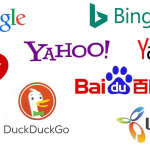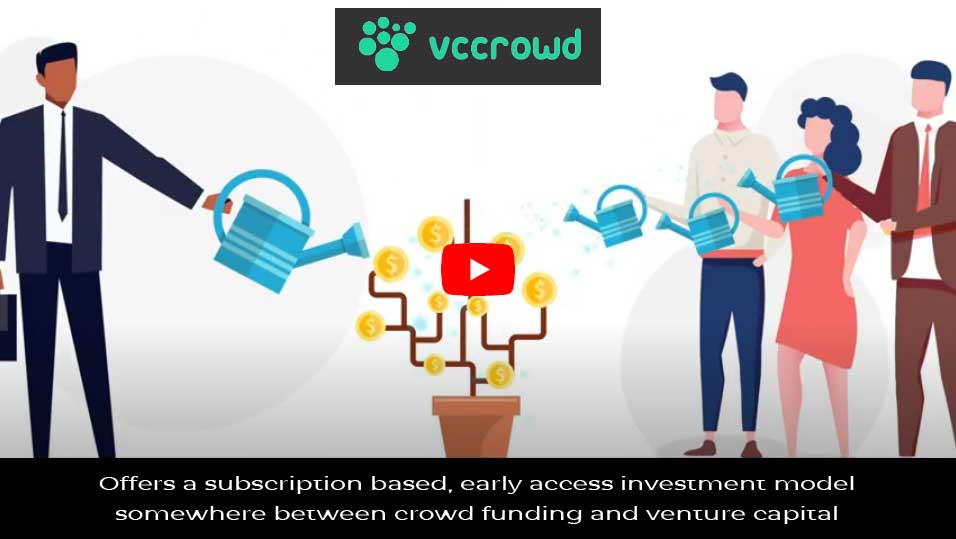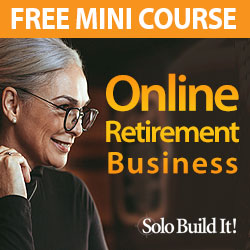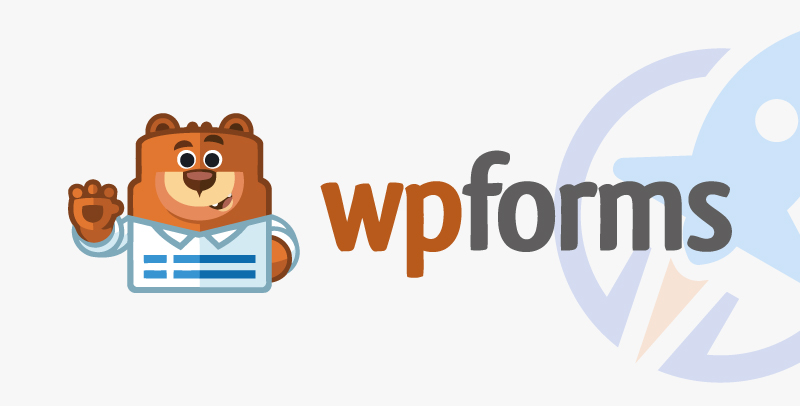Your mission, should you choose to accept it: train new employees on a machine so complex, it once required 100+ pages of documents and diagrams to explain it. And, oh yeah, you’ll also never see it up close — it’s covered in stainless steel, and fully enclosed in glass.
Welcome to an average day for technical training expert and Vyond customer Sarah Diggs.

A laser physicist by background, Sarah Diggs has devoted over 20 years of her career to designing and developing technical training programs for various industries, such as pharmaceuticals, lasers, aerospace, weatherization, and automotive manufacturing and operations.
It started while she was serving as a laser manufacturing manager in Silicon Valley. With fierce competition for new laser technicians, she proposed her company could fill the huge demand by training recruits from San Jose City College and “right off the street.” In partnership with San Jose City College and with her newly developed computer-based and hands-on training program, she was right. Since then, Sarah has worked with firms like San Francisco International Airport, Boeing, and KLA-Tencor to onboard, upskill, and reskill their workforces.
We sat down with Sarah to talk about how she’s reimagining technical training for high-stakes, high-tech industries like pharmaceutical manufacturing. Here’s what she had to say.
Vyond: What role do you see technical training playing in today’s economy?
Sarah: Technological disruption is happening at a pace and scale we’ve never seen, especially in high-tech manufacturing industries. They’re introducing advanced technologies and looking to automate and digitize as much as possible. Companies more broadly are scrambling to figure out how to keep up, how to train their workforces, and where they should invest in training so they can benefit from tech advancements.

Skills shortage is the biggest barrier preventing industries like manufacturing from scaling up their technologies.
Skills shortage is the biggest barrier preventing industries like manufacturing from scaling up their technologies. There’s intense competition across especially the semiconductor, pharma, and laser industries for technical talent. The work can’t all be done by engineers and PhDs. The question becomes, how do we create a pipeline of people who can perform this work and move them into these industries? Technical training is crucial for ensuring there’s people with the necessary skills to perform the work.
V: You’re doing training work now with a pharmaceutical manufacturing company. Who’s your audience, what are the goals, what are the stakes, and who are the experts you work with?
S: We’re building training programs for machine operators working on automated machines and processes. Some of these machines can be the size of a room, fully enclosed in glass, with stainless steel sides and limited access to see inside.
We have two major goals: get operators up to speed quickly and efficiently, and standardize the training process so we know all operators are starting at the same level.
This is a heavily regulated, “sterile pharmaceutical product” environment, where the FDA mandates that contamination rates of finished product can be only one in one million. Mistakes mean a patient could die. Or big money can be lost when production has to stop. Operators are the greatest source of contamination, so we focus on reducing that risk throughout the production process. The hardest part might be the lack of access to the machines we’re training on: even though we’re developing training on the machines, we’re not allowed onto the production floor except for special times when the machines are shut down.
To create this content we partner with trainers, product owners, manufacturing quality control, automation engineers, and equipment manufacturers. And we supplement with lots of our own research. For one project I learned all about depyrogenation (a process to remove any substance that can cause fever) from an awesome doctor in the UK who posts short videos online about pharma manufacturing. We used some of those snippets in the course. I learn something new on every project and I think, holy moly, this is really hard stuff.
Sample of one of Sarah’s training videos on a manufacturing process
V: How do you like to use Vyond for technical training?
S: Working in the pharmaceutical industry, our audiences have all different education levels and some speak English as a second language. And most of us are visual learners. With Vyond, being able to put something together that visualizes these complex machines and processes has been a game changer for technical trainers.



With Vyond, being able to put something together that visualizes these complex machines and processes has been a game changer for technical trainers.
With my earlier pharma project as an example: previously, aspiring machine operators might’ve been handed a hundred-page document describing and showing a machine’s components in diagrams and asked to memorize them, come back, and draw the diagrams from memory. It was mostly only engineers and PhDs that were successful.
We rebuilt the training program trying to simplify these complex ideas, processes, and machines to make them accessible. It has become a four-level course that increases in complexity, from an introduction to the machines and parts in Level 1, all the way through Level 4 on how to handle a shutdown or changeover, where every step is critical and every minute the machine is down is money lost. Vyond helps us bring 2D diagrams to life and helps operators get familiar with these machines even before they step onto the manufacturing floor.
The training program now takes weeks where it used to take months. Learners are making connections much faster. And it’s allowing a broader pool of operators to be successful, beyond the expected engineers and PhDs. Which means those folks can focus where they’re supposed to: on improving processes and launching new products.
Sarah on how Vyond fills important gaps for creating technical training
Get techniques for creating training on technical and tricky topics.
V: What’s your high-level process for developing a technical training project?
S: First we meet with product owners and stakeholders to discuss the project details, deliverables, and dates, and then gather all the relevant documentation, drawings, images and video we can get our hands on.
Next we get ourselves into the learners’ point of view: what do they want and need to know? What might they know already? From there we’ll research and work with experts to determine what’s critical for success with each topic. What should learners be doing?
After that we’ll decide the types of media that’ll be best to transfer the knowledge we’re including. We work with experts on any photo and video shoots of the machines and processes – this can be tricky, as we can only get onto the production floor in the rare windows of time when machines aren’t operating.
Then we get into designing and producing our course templates and structure, and add animations, video, and images. At this point we’re working in Vyond, and I like to use Articulate too for interactivity. From there we get into an iterative review and update process with experts: they review small chunks of the content and get us feedback so we can make tweaks.
Finally, when the course is fully baked, we send it for functionality testing with an outside team to ensure everything’s working as it should. Once that’s complete, the course is ready for release to the learning management system.
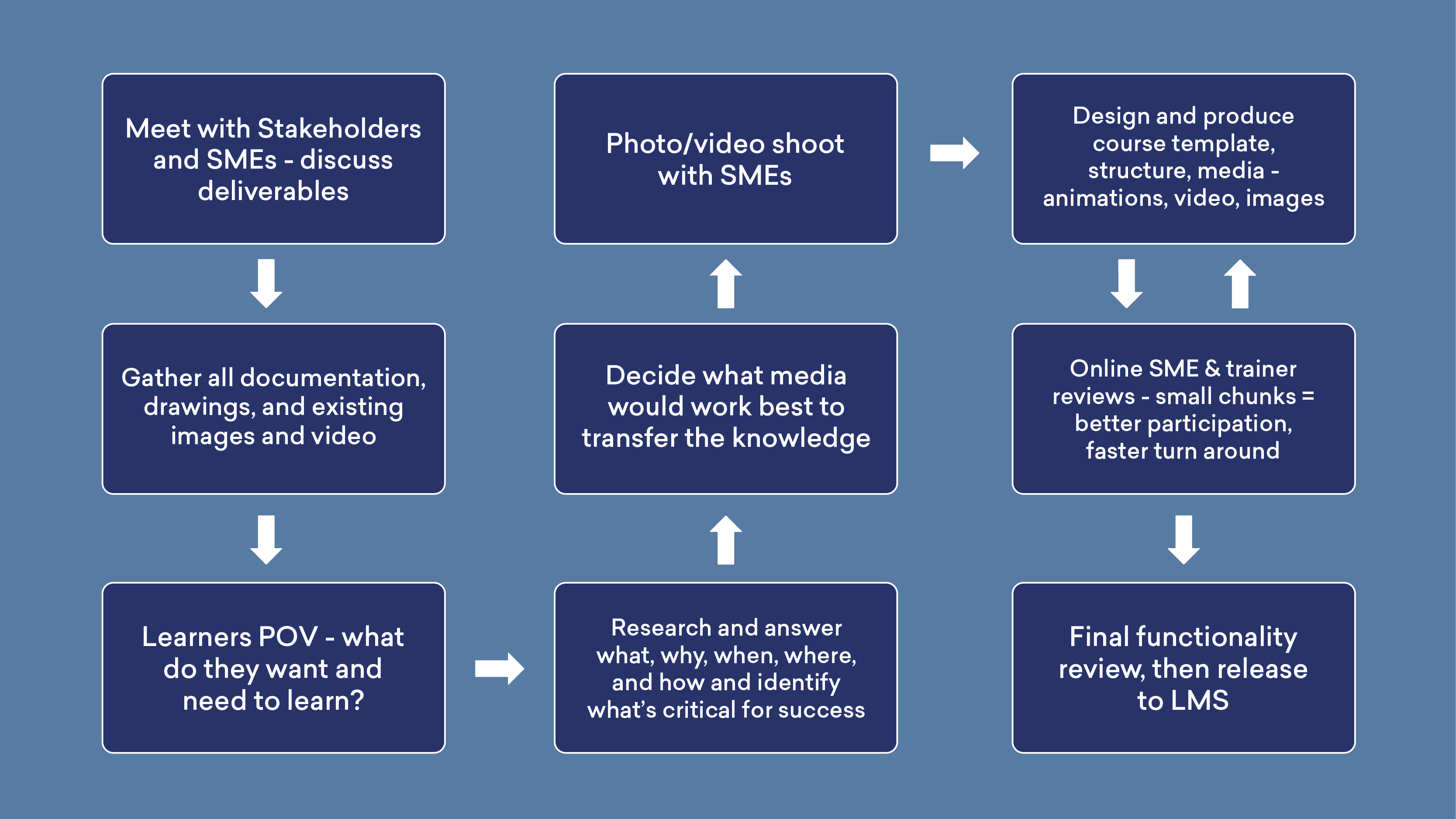

Sarah’s process for designing a technical training course
V: What’s a lesson you learned the hard way?
S: Give subject-matter experts small chunks of content to review at a time – one video, one animation, one chapter or module. Most of our experts spend their time focused on new product development. Upskilling operators isn’t their main focus so it can be hard to get them engaged. When we work in an agile fashion like this, with small samples for review rather than huge documents or the whole portfolio, we’ve had much more success getting a response from experts and affirmation (or not) that we’re on the right track with technical content.
And we’ve noticed Vyond is giving us an unexpected perk here. Before, when training content was text and photograph-heavy, it took some prodding to get a response from experts, and even then it wasn’t always thorough. Now that we’re building content in Vyond, we’ve noticed experts are more interested. They’re responding more often and with more feedback. Vyond has helped us step up our game.
V: How has technical training changed in the past few years? Where do you see it headed?
S: Cloud-based eLearning development apps and tools like Vyond are an amazing innovation over the past decade. The old way was, we hired teams to develop courses: videographers, voiceover talent, flash animators. It was very expensive and time consuming. And by the time you delivered the content, it was on its way out of date. Not anymore!
AI will be a gamechanger, of course, once we all learn how to prompt it correctly. I think augmented reality is the most exciting thing on the horizon. We’ll be able to project 3D images and audio right into a user’s view. How exciting for a learner to be able to immerse themselves in an actual process in real time. The applications will be huge for technical training, especially in industries and environments where getting hands-on experience is challenging.
To learn more about Sarah and her firm Cognitably, visit their website or drop Sarah a line.
If you’ve been meaning to give Vyond a whirl, try it now, free, for two weeks. Want to get your whole team involved? Try it as a group! Chat with us about a team pilot.

